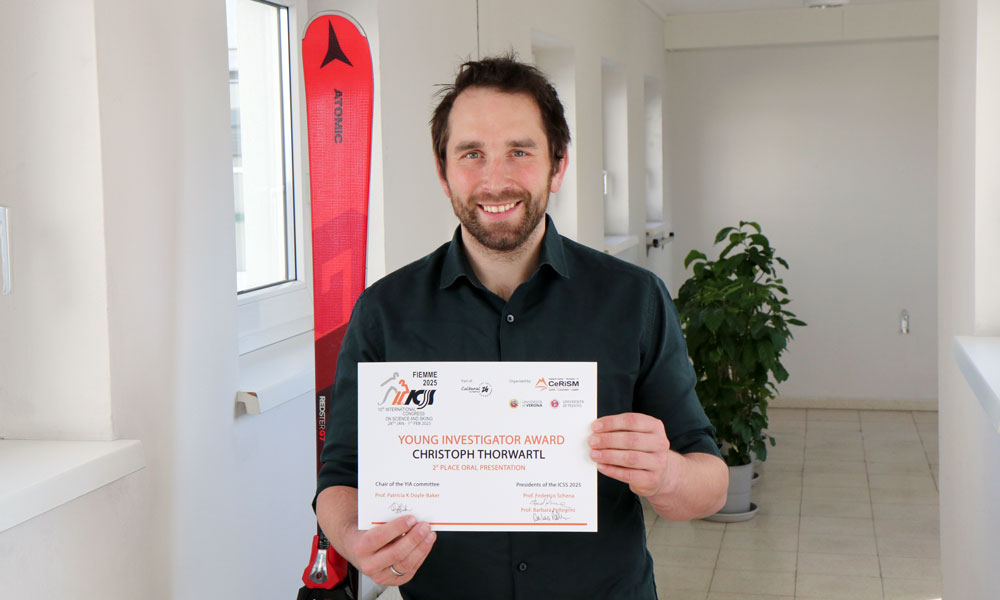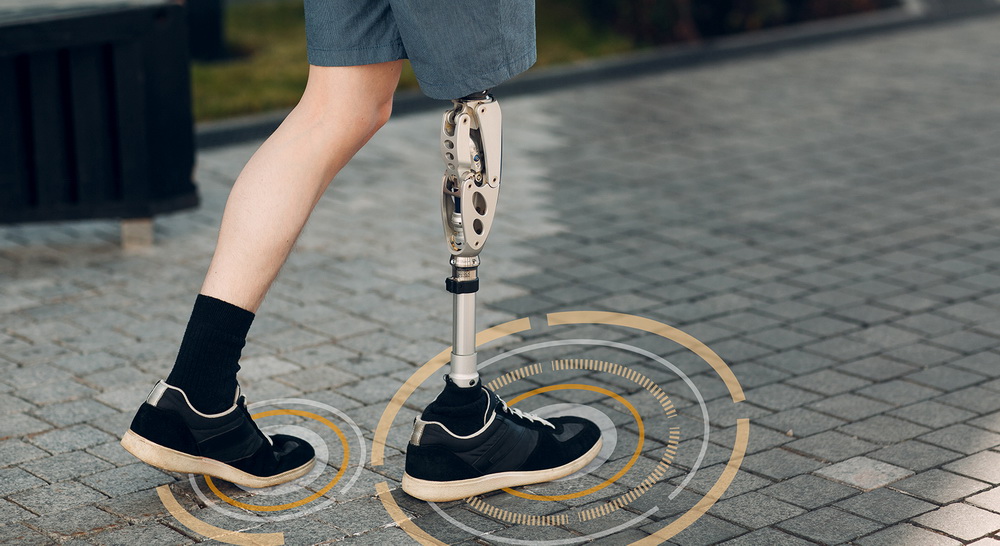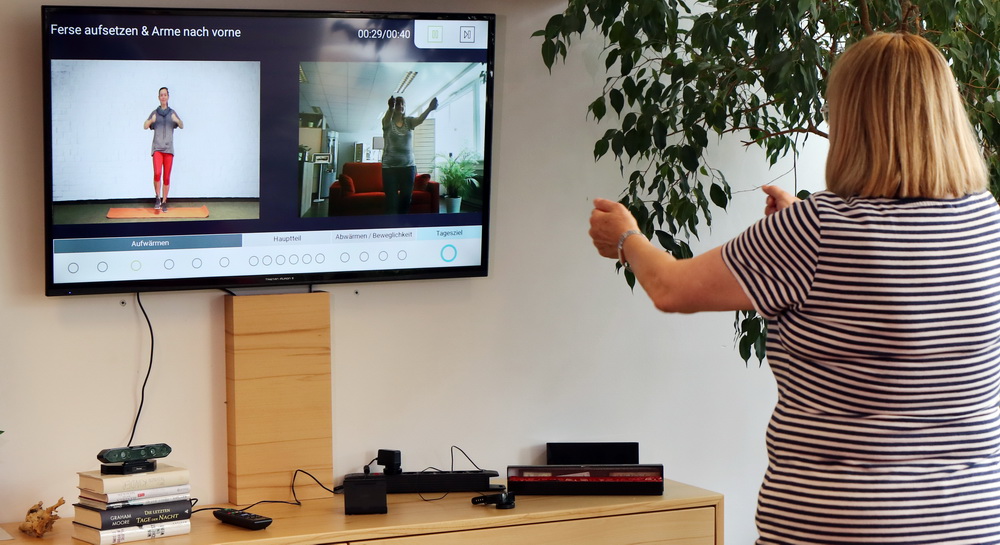
Young Investigator Award: Innovative ski research awarded
At the 10th International Congress for Science and Skiing, Christoph Thorwartl presented a study on measuring the angle of attack (AoA) when skiing – a project that went from the initial idea of a home-built simulation machine to application on real ski slopes. Thorwartl’s work earned him second place in the Young Investigator Award. The prize was awarded by a jury of six professors from different universities among 33 young researchers.
The published study “Beyond the Carving-Skidding Dichotomy: Sensor-assisted Measurement of Angle of Attack in Skiing” (Thorwartl, Schütz, Holzer, Resch, 2025) significantly extends the current understanding of skiing dynamics. Until now, skiing has been roughly divided into carving and drifting, but Thorwartl’s sensor-based approach allows for a more precise and continuous analysis of skiing behavior.
From the lab to the ski slope
As part of the study, four inertial measurement units (IMUs) and a GNSS module were mounted on a ski. The tests were conducted on real slopes with a specially equipped test skier who completed 20 turns per technique – carving, parallel skiing, and transitions between the two.
The data was filtered and analyzed in a multi-step process. The calculated AoA values show significant differences depending on the riding technique:
- Carving had the lowest mean AoA at 6.26°.
- In parallel ski steering, the average AoA was 18.80°, with a peak value of 32.47°.
- The transitions showed a characteristic curve with a maximum of 22.13° at the beginning of the swing.
These results confirm and simultaneously extend previous research: the angle of attack can be used as a precise indicator of a skier’s technique and style, independent of subjective judgments or complex video analysis.
Relevance for practice and training
The study emphasizes the importance of AoA as a key indicator for assessing skiing technique. The ability to measure the angle of attack in real time with a sensor opens up new perspectives for training, technique optimization and performance diagnostics in alpine skiing. Coaches and athletes can work on targeted improvements based on data and on an individual basis.
With this work, Christoph Thorwartl has given an innovative impulse to ski research. He impressively demonstrates how modern sensor technology paves the way to a new dimension of sports analysis.
The award-winning publication
Christoph Thorwartl, Sebastian Schütz, Helmut Holzer, Bernd Resch (2025): Beyond the Carving-Skidding Dichotomy: Sensor-assisted Measurement of Angle of Attack in Skiing. In: Proceedings of 10th International Congress on Science and Skiing.






